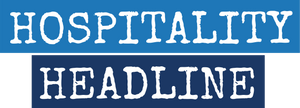Ever tried to order food online with a broken finger? Or squinted at a menu in dim lighting? Now imagine doing that with a permanent disability. That's why web accessibility matters, and it's where WCAG comes in.
What the Heck is WCAG Anyway?
WCAG (Web Content Accessibility Guidelines) sounds techy, but it's really just a set of rules that help make websites usable for everyone, including people with disabilities. Think of it as the digital version of adding a wheelchair ramp to your restaurant.
These guidelines are built around four main principles, often called POUR:
- Perceivable: Can everyone see or hear your content?
- Operable: Can everyone navigate and use your site?
- Understandable: Can everyone comprehend what's on your site?
- Robust: Will your site work with different technologies, including assistive devices?
There are three levels of compliance: A (basic), AA (standard), and AAA (gold standard). Most restaurants should aim for at least AA compliance.
Why Should Restaurant Owners Care?
You might be thinking, "I serve food, not websites." But here's the deal:
- Legal Protection: Restaurants have faced lawsuits over inaccessible websites. Domino's Pizza learned this the hard way in a landmark case that established digital platforms connected to physical locations must be accessible.
- More Customers: About one in four Americans lives with a disability. That's a lot of potential diners you could be missing out on!
- Better Experience for Everyone: Accessibility improvements make your site better for all users. Clear navigation and readable text help everyone, not just people with disabilities.
- Improved SEO: Many accessibility practices, like adding alt text to images, actually help your site rank better in search results. Win-win!
What Restaurants Need to Know
If you run a restaurant, here's what matters most:
Your Website
- Make sure people can navigate with just a keyboard
- Use good color contrast so text is readable
- Structure your content logically with proper headings
- Ensure all images have descriptive alt text
Your Online Menu
- Avoid posting menus as PDF files - they're often inaccessible
- Use HTML for menus so screen readers can interpret them
- Include detailed descriptions of dishes
- Make sure text is resizable without breaking the layout
Online Ordering Systems
- Create forms with clear labels and error messages
- Allow enough time for people to complete their order
- Make sure pop-up elements are accessible
- Test with keyboard navigation
Mobile Apps
- Use large enough touch targets (at least 44x44 pixels)
- Ensure compatibility with screen readers like VoiceOver and TalkBack
- Design for text enlargement without losing functionality
Common Challenges and Simple Solutions
"This Sounds Complicated and Expensive!"
Start small: Use free tools like WAVE or Axe to check your site for basic issues. Fix the biggest problems first, then gradually work on others. Some accessibility improvements cost nothing but attention to detail.
"Our Website is Really Old..."
You don't need to rebuild from scratch. Start by making your most-used pages (home, menu, reservations) accessible, then work outward. When you do update your site, choose accessible templates.
"We Don't Know How to Do This!"
You don't need to become an expert. Consider hiring a consultant for a site audit, or look for website builders with built-in accessibility features. There are also many free online resources to learn the basics.
Success Stories
Several restaurant chains have embraced accessibility with great results:
- Chipotle made their online ordering system fully keyboard navigable with clear forms and instructions.
- Panera Bread improved both their app and self-service kiosks with high-contrast displays and intuitive interfaces.
- Starbucks created an internal accessibility team to ensure all digital products meet standards.
- Domino's Pizza, after their legal challenge, revamped their digital platforms to be more accessible.
Getting Started: Your Accessibility Checklist
- Audit your current site: Use free tools like WAVE, Lighthouse, or Axe to identify issues.
- Fix the basics first: Add alt text to images, improve color contrast, ensure keyboard navigation works.
- Make your menu accessible: Convert PDF menus to HTML or provide accessible alternatives.
- Test with real users: If possible, get feedback from people who use assistive technologies.
- Train your staff: Make sure everyone who updates your site understands accessibility basics.
- Keep learning: Accessibility is an ongoing process, not a one-time fix.
The Bottom Line
Making your restaurant's digital presence accessible isn't just about avoiding lawsuits—it's about serving all your customers well. Just as you wouldn't turn away a diner at your physical door, your website shouldn't create barriers either.
By embracing WCAG principles, you're not just checking a legal box; you're expanding your customer base, improving everyone's experience, and demonstrating that your commitment to hospitality extends into the digital realm.
The best part? Many accessibility improvements are simple to implement and benefit all your customers. It's a rare case where doing the right thing also helps your bottom line.
So, next time you update your website or online ordering system, remember: if it's not accessible to everyone, it's not really accessible at all.
Need help making your website WCAG accessible? We can help! seth@brandedstrategic.com

